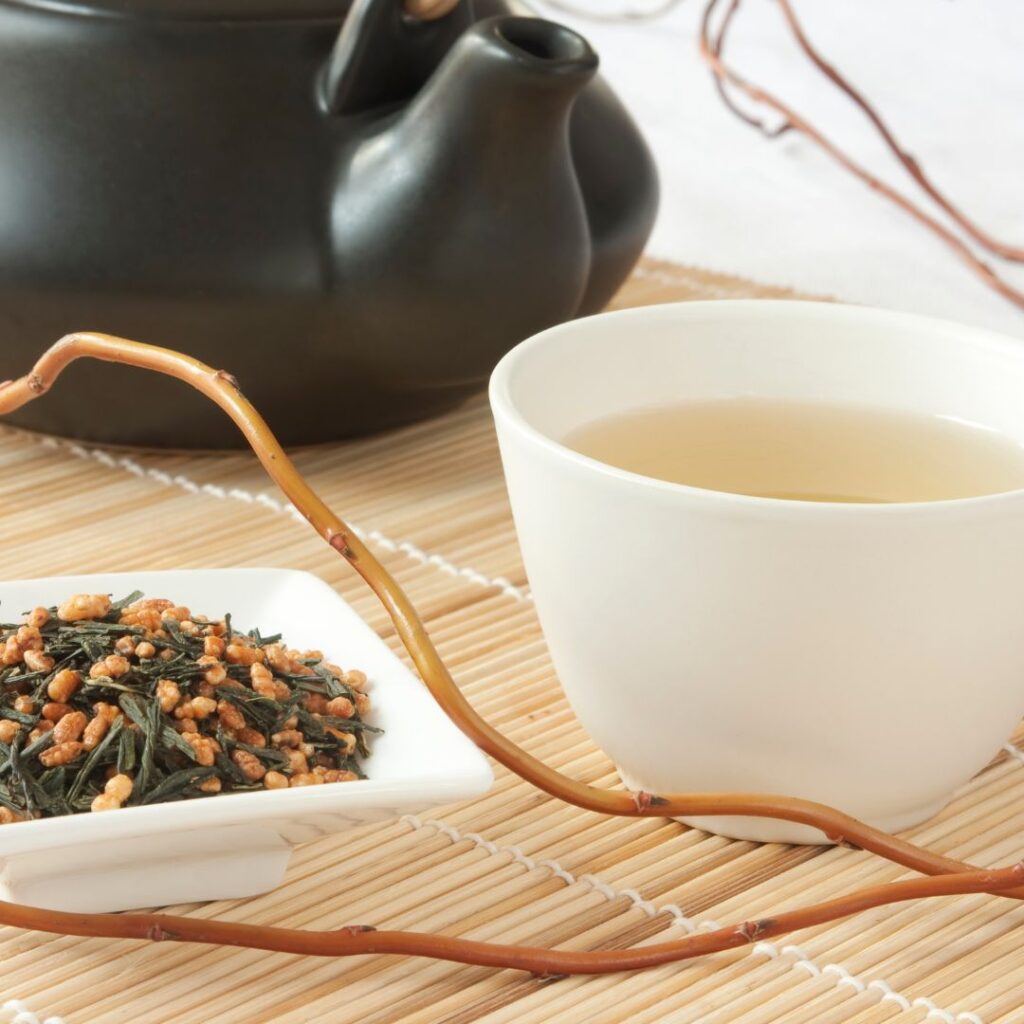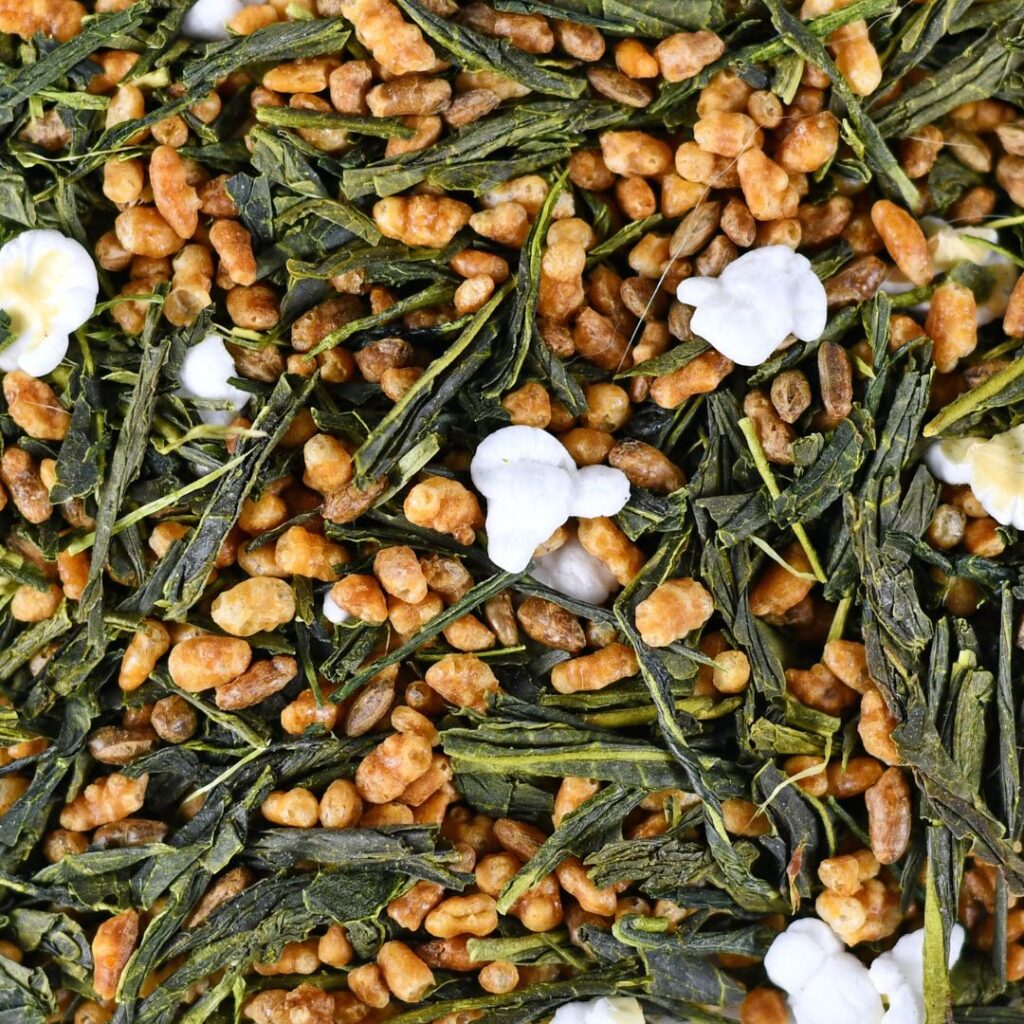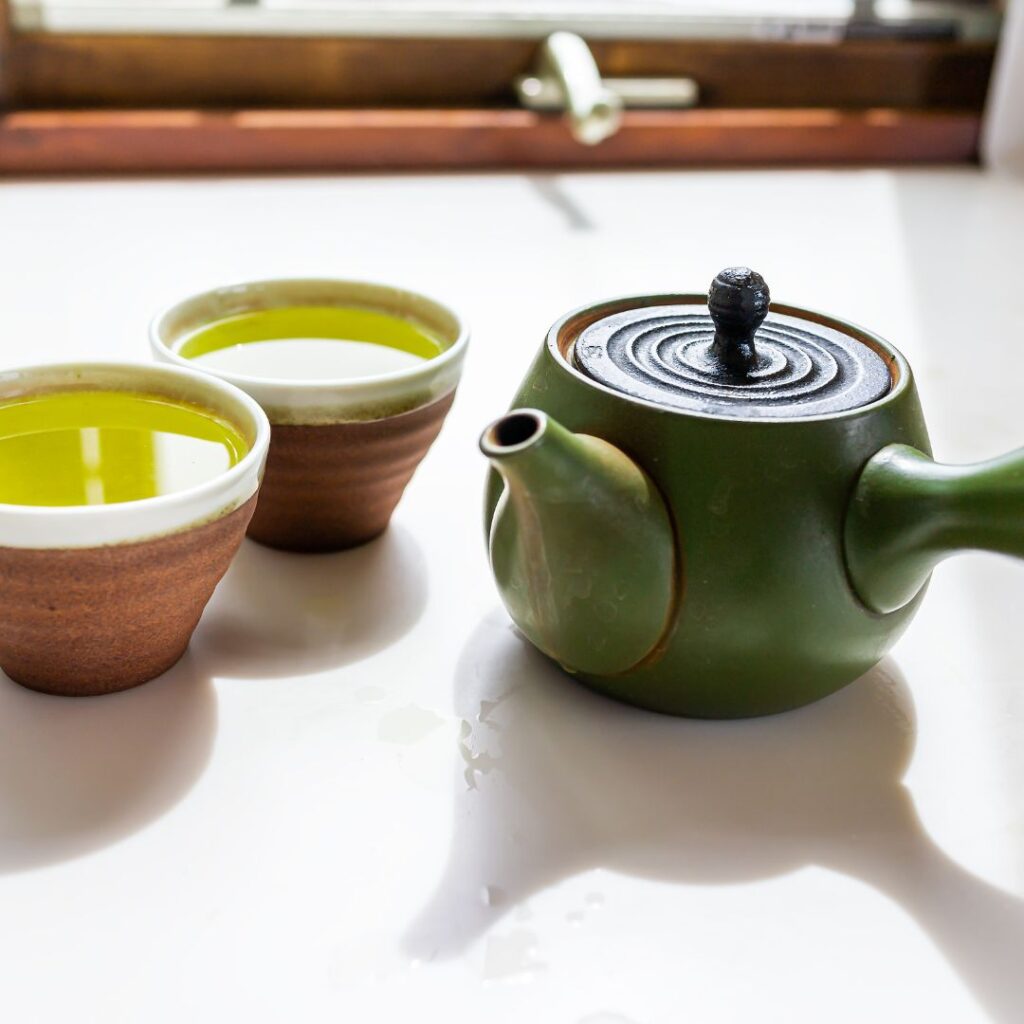Genmaicha Tea What Is It Made of?
Genmaicha, also known as Brown Rice

Origins of Genmaicha
Genmaicha’s story begins in Japan, where it emerged as a practical solution to make green tea more accessible. By blending green
Over time, Genmaicha transcended its humble origins, evolving into a beloved beverage enjoyed by people from all walks of life in Japan. Its versatility allows for enjoyment in various settings and seasons. Whether sipped as a comforting warm drink on a chilly day or served as a refreshing iced
The addition of roasted rice to green
Choosing Genmaicha isn’t just about enjoying a delicious beverage; it’s about embracing a tradition rooted in history and culture. It serves as a reminder that innovation often arises from necessity, and sometimes, the simplest ingredients yield the most delightful results. Genmaicha is a testament to the beauty of simplicity, offering a bridge to a richer, more accessible
Green Tea Base
Genmaicha’s distinct flavor and affordability are anchored by its green
Understanding the significance of the green
In essence, the green

Roasted Brown Rice
Diving into the heart of what gives Genmaicha its distinctive taste, roasted brown rice introduces a warm, nutty flavor to the blend. This ingredient isn’t just an important component; it’s a key element that balances the bitterness of the green
Roasting brown rice for Genmaicha isn’t a haphazard process. You have control here, choosing between lightly roasted grains that hint at a subtle crispness or darker roasts that bring out a deeper, more pronounced smoky flavor. This choice greatly influences the final character of your
Blending Process
How does one shift from selecting the ideal roasted brown rice to achieving the perfect blend in Genmaicha
Next, make sure your green
Health Benefits
Exploring the health benefits of Genmaicha
Delving deeper, you’ll find that Genmaicha’s ability to support weight management efforts isn’t to be overlooked. Its composition helps to increase the feeling of fullness, thereby reducing the likelihood of overeating. This aspect is particularly beneficial if you’re aiming to maintain or achieve a healthy weight.
Moreover, the calming effects of Genmaicha on the mind and body shouldn’t be underestimated. Its gentle caffeine content, combined with theanine, offers a balanced energy boost without the jitters associated with stronger caffeinated beverages. This makes it an ideal choice for those seeking a mild stimulant that also promotes relaxation and mental clarity.
Incorporating Genmaicha into your daily routine empowers you to take control of your health, offering a natural and holistic approach to well-being.

What is the content of Genmaicha
At its core, Genmaicha consists of green
The green
You’ll find that beyond its primary ingredients, Genmaicha is a canvas for your culinary exploration. It’s a straightforward, no-nonsense
Does genmaicha contain caffeine in the morning
Yes, genmaicha contains caffeine, since it’s made with green
The caffeine level in genmaicha is generally lower than that of a standard green
For those who desire control over their caffeine consumption, genmaicha offers a balanced option. It allows you to enjoy the warmth and ritual of a morning
Can you drink genmaicha before bed
Considering its lower caffeine content, you might find genmaicha a suitable choice for a pre-bedtime
However, it’s important to listen to your body’s reaction. If you’re particularly sensitive to caffeine, even the reduced amount in genmaicha might affect your sleep quality. Try drinking it well before your bedtime initially, giving yourself time to gauge its impact. You’ll want to make sure it relaxes rather than energizes you when winding down.
Incorporating genmaicha into your evening routine could enhance your nighttime wind-down, providing a moment of tranquility without the worry of sleep disruption. Remember, controlling your caffeine intake is key to a restful night. By choosing genmaicha, you’re opting for a gentler, potentially sleep-friendly beverage.
Genmaicha in traditional Japanese tea ceremonies versus its casual everyday use
Traditional Role in Tea Ceremonies
Traditionally, genmaicha was not the central focus of Japanese

Konnichiwa! (Hello!) I'm Pat Tokuyama, a Japanese tofu cookbook author, who travels for music, food, and adventure. If you like Japanese tea, checkout some of the newestorganic japanese tea, matcha bowls and noren and more!
** Curious about the Plant Based Japanese Cooking Club? ** Learn more here!
Modern Everyday Use
In modern times, genmaicha has become a popular everyday beverage in Japan. Its comforting, nutty flavor and lower caffeine content make it a suitable drink for all ages and times of the day. It’s often enjoyed for its health benefits, such as aiding digestion and providing antioxidants, and for the sense of well-being it imparts. The practice of drinking genmaicha has become less formal and more integrated into daily life, reflecting the contemporary Japanese lifestyle’s blend of tradition and modernity.
The transition from a
Exploring Culinary Creativity with Genmaicha
- Genmaicha Rice Pilafs and Grain Delights:
- Indulge in the nutty goodness of Genmaicha-infused rice pilaf, where each grain is steeped in the aromatic essence of this unique
tea blend. Add a medley of toasted nuts, dried fruits, and fragrant herbs for a side dish that steals the show. - Shake up your grain game with quinoa or couscous cooked in brewed Genmaicha. These ancient grains soak up the
tea ‘s robust flavor, providing the perfect canvas for vibrant salads or hearty vegetable bowls.
- Indulge in the nutty goodness of Genmaicha-infused rice pilaf, where each grain is steeped in the aromatic essence of this unique
- Decadent Desserts with a Twist:
- Treat your taste buds to a scoop of Genmaicha-infused ice cream or gelato, where creamy richness meets toasted rice crunch. Drizzle with honey or sprinkle with crushed toasted rice for an extra layer of indulgence.
- Elevate your baked goods with a sprinkle of finely ground Genmaicha leaves. From cookies to cakes, the earthy undertones of this
tea blend add depth and complexity to every bite.
- Bold Marinades and Sauces:
- Fire up the grill with a Genmaicha teriyaki marinade that packs a punch. Soy sauce, ginger, and garlic mingle with brewed Genmaicha for a marinade that takes your meats and tofu to new heights.
- Dive into the world of savory sauces with a Genmaicha glaze or reduction. Reduced brewed
tea combines with brown sugar or maple syrup to create a luscious coating for roasted veggies or grilled meats.
- Savory Sensations:
- Upgrade your risotto game with a Genmaicha twist. Swap some of the broth for brewed
tea and finish with Parmesan cheese and truffle oil for a dish that’s both comforting and luxurious. - Warm up with a bowl of Genmaicha-infused soup or stew, where hearty ingredients simmer in a flavorful broth that’s anything but ordinary.
- Upgrade your risotto game with a Genmaicha twist. Swap some of the broth for brewed
- Beverage Bliss:
- Shake things up with Genmaicha-infused cocktails that tantalize the taste buds. From classic Old Fashioneds to refreshing Mojitos, the nutty notes of this
tea blend add a unique twist to your favorite libations. - Start your day right with a Genmaicha latte or smoothie that’s as energizing as it is delicious. Blend brewed
tea with milk or a milk alternative, ice, and your choice of sweetener for a refreshing pick-me-up.
- Shake things up with Genmaicha-infused cocktails that tantalize the taste buds. From classic Old Fashioneds to refreshing Mojitos, the nutty notes of this
Conclusion
You’ve discovered that Genmaicha is a unique blend of green
While it does contain some caffeine, it’s less than most green teas, making it a suitable choice for your morning ritual or even before bed.
Embracing Genmaicha means enjoying not just its soothing taste but also reaping its health benefits. So, go ahead, make it part of your daily routine.








Konnichiwa! (Hello!) I'm Pat Tokuyama, a Japanese tofu cookbook author, who travels for music, food, and adventure. If you like Japanese tea, checkout some of the newestorganic japanese tea, matcha bowls and noren and more!
** Curious about the Plant Based Japanese Cooking Club? ** Learn more here!